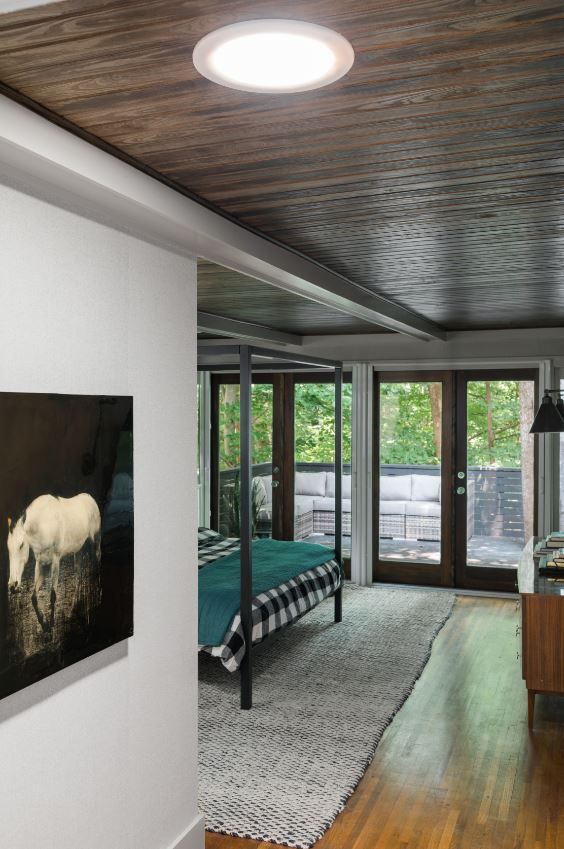
Do you want natural light to flood your living room, kitchen, or other living space? If so, sun tunnels, also known as tubular skylights, may be the perfect solution.
These innovative lights are a cost-effective alternative to traditional skylights, transforming dark, windowless spaces into bright, inviting areas—completely transforming your home’s look and feel. Let’s explore the benefits, types, and applications of sun tunnels to help you decide if they’re the right choice for your home.
What Are Sun Tunnels?
Sun tunnels, also known as solar tubes, are tubular skylights that capture sunlight from your roof and funnel it into interior spaces through a highly reflective tunnel. Unlike traditional skylights, which require extensive structural modifications, sun tunnels are relatively easy to install and can fit into tight spaces between roof rafters. They consist of three main components: a roof-mounted dome that captures sunlight, a reflective tube that channels the light, and an interior diffuser that disperses the light into the room below.
What Are the Benefits of Sun Tunnels?
Sun tunnels offer advantages for homeowners looking to enhance their living spaces with natural light. They also reduce energy consumption, increase cost savings, and can even improve personal well-being.
Energy Efficiency
One of the primary benefits of sun tunnels is their energy efficiency. Sun tunnels can reduce electricity usage by bringing natural light into spaces that would otherwise require artificial lighting during daylight hours. This lowers energy bills and decreases a home’s overall carbon footprint, making sun tunnels an environmentally friendly lighting option.
Cost-Effectiveness
Sun tunnels are a cost-effective alternative to traditional skylights. Angi reports that installing a solar tube, or sun tunnel, can cost anywhere from $600–$1,000 for the materials, with most homeowners paying approximately $800 per tunnel. Installing a skylight, on the other hand, could cost you up to $2,764.
Sun tunnels require no ongoing operational costs, as they rely solely on sunlight to illuminate spaces. Over time, the energy savings from reduced artificial lighting use can offset your initial investment.
Improved Mood and Productivity
Natural light positively affects mood, productivity, and overall well-being. The Global Impact of Biophilic Design in the Workplace Human Spaces report reveals that proximity to natural elements, such as sunlight and greenery in the work environment, is associated with a 15% increase in well-being and a 6% increase in productivity. Sun tunnels create a healthier, more pleasant living environment by bringing natural light into your home.
How Do Sun Tunnels Work?
Sun tunnels operate on a simple yet effective principle. The dome on the roof captures sunlight from various angles throughout the day. This light is then directed down the highly reflective tunnel, which can be rigid or flexible. The tunnel’s interior is designed to maximize light transmission, ensuring that as much natural light as possible reaches the diffuser at the ceiling level. The diffuser then spreads the light throughout the room, creating a soft, natural illumination that mimics the effect of a traditional window or skylight.
Types of Sun Tunnels
There are two main types of sun tunnels: rigid and flexible. Your choice will depend on your home’s architecture and desired light output.
Rigid Sun Tunnels
Rigid sun tunnels use a straight, solid tube to channel light from the roof to the ceiling. These tunnels are highly efficient at transmitting light, making them ideal for longer distances between the roof and ceiling. Rigid tunnels can deliver up to 98% of the captured light into the room, providing bright, clear illumination even on overcast days.
Flexible Sun Tunnels
Flexible sun tunnels use a bendable, accordion-like tube that can navigate around obstacles in the attic space. While they’re less efficient at transmitting light than rigid tunnels, they offer greater installation flexibility. Flexible tunnels are a good choice when a straight path from the roof to the ceiling isn’t possible due to existing structures or HVAC systems.
What Locations Are Ideal for Sun Tunnels?
Sun tunnels can brighten up almost any interior space, but they’re particularly effective in certain areas of the home. Here are some ideal locations where sun tunnels can make a big impact.
Kitchens
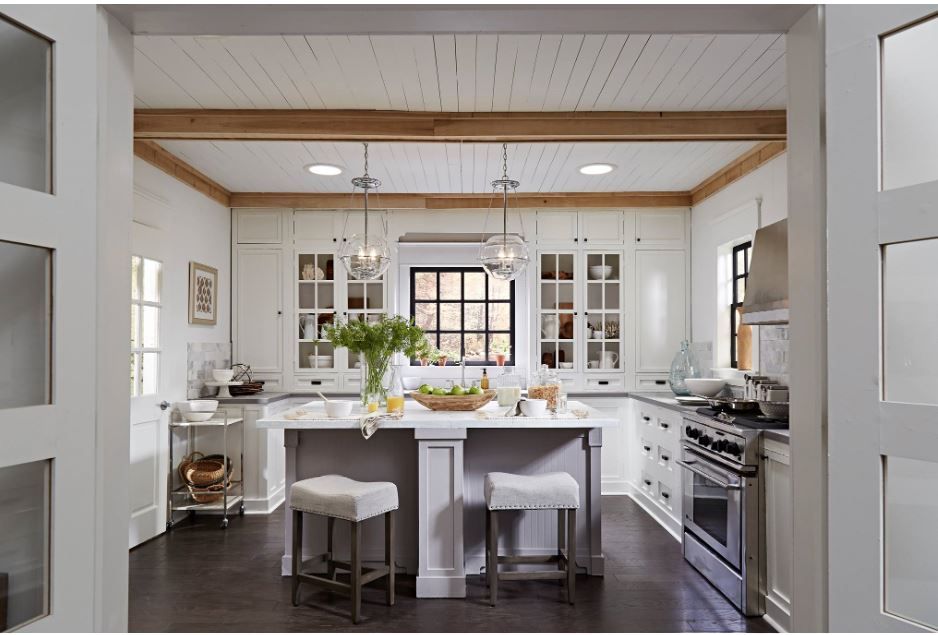
Kitchens are often the heart of the home and benefit greatly from natural light. Sun tunnels can provide task lighting over islands and workspaces, enhancing your kitchen’s functionality and ambiance.
Bathrooms

Bathrooms, especially those without windows, can feel cramped and dark. Sun tunnels can transform these spaces, bringing in natural light that brightens the room and creates a more open feel. A sun tunnel can provide much-needed illumination while maintaining your privacy in a small powder room or shower space.
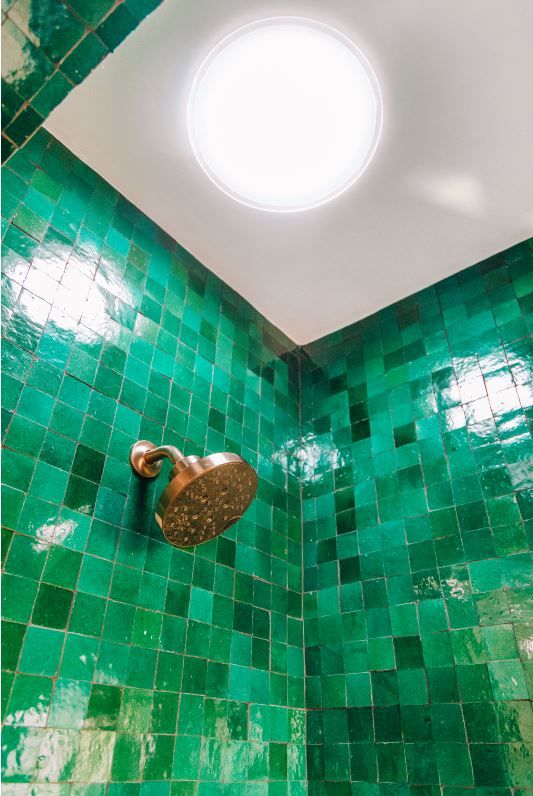
Hallways and Stairwells
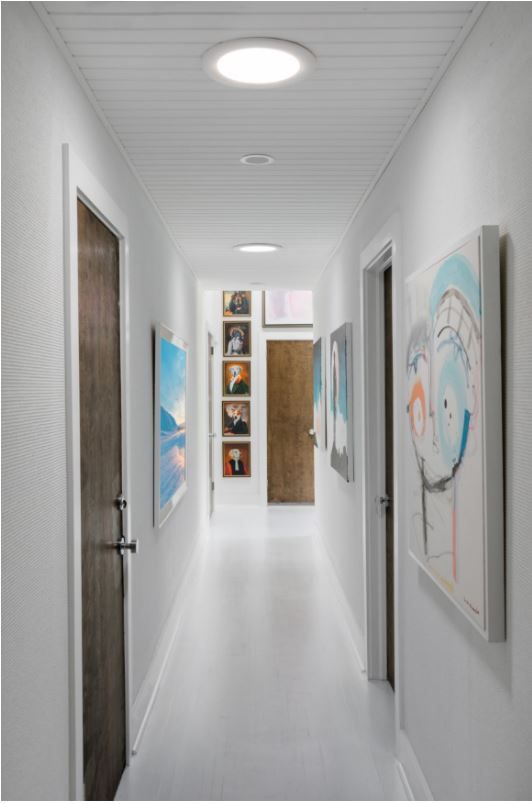
Often overlooked in home design, hallways and stairwells can become interesting focal points with the addition of sun tunnels. These areas, which often lack natural light, can be transformed into bright, welcoming spaces.
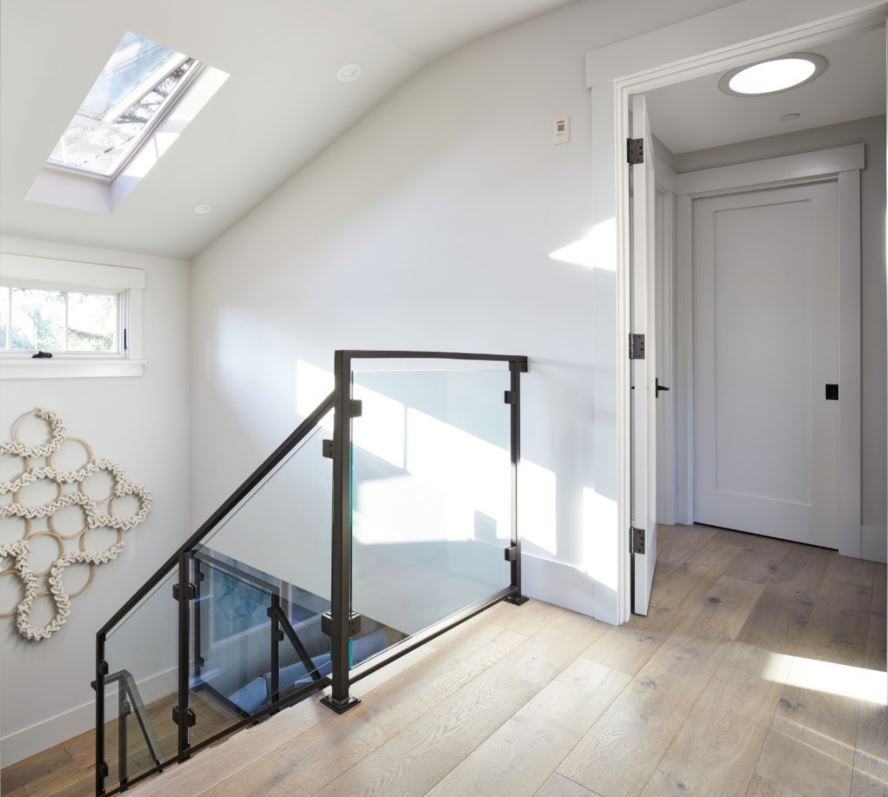
Home Offices
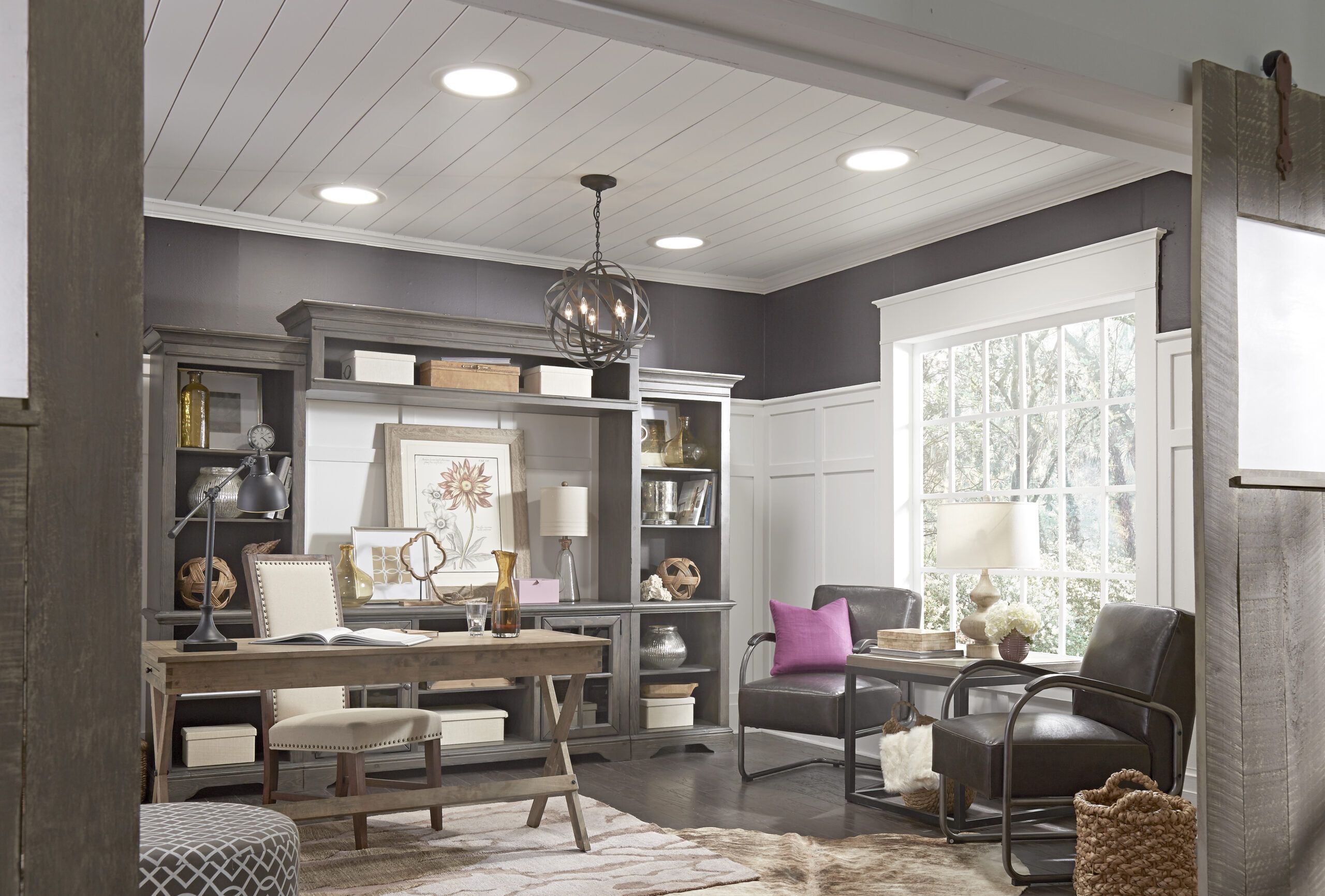
A well-lit home office is key for a productive remote workspace. Sun tunnels provide natural light that reduces eye strain and creates a more pleasant work environment.
Sun Tunnel Installation Process Options
Installing a sun tunnel can be relatively straightforward, depending on your DIY skills and your roof’s complexity. However, professional installation may be the best option to ensure proper fit and optimal performance.
DIY Installation
Installing a sun tunnel can be a manageable DIY project for those with home improvement experience. The process typically involves cutting a hole in the roof from the outside and another in the ceiling from the inside and then connecting these openings with the reflective tunnel. Many manufacturers claim that a sun tunnel can be installed in as little as 90 minutes. Follow the manufacturer’s instructions carefully and ensure proper sealing to prevent leaks.
Professional Installation
Hiring a professional helps ensure your sun tunnel is installed correctly and efficiently. Professional installers have the experience to navigate potential challenges, such as avoiding electrical wiring and HVAC ducts. They can also ensure the installation is weatherproof and complies with local building codes. The peace of mind that comes with professional installation may be worth the additional cost.
Comparing Sun Tunnels to Traditional Skylights
While sun tunnels and traditional skylights both bring natural light into homes, they have distinct differences. Sun tunnels are generally more versatile, fitting into spaces where traditional skylights can’t. They’re also typically less expensive to install and don’t require as much structural modification. However, traditional skylights offer a direct view of the sky and can be opened for ventilation—two features that sun tunnels don’t provide. The choice between the two depends on your needs, budget considerations, and desired aesthetic.
Sun Tunnel Customization Options
Sun tunnels offer customization options to suit different home styles and lighting needs.
Diffuser Designs
The diffuser is the visible part of the sun tunnel from inside the room, and it comes in various designs to complement different interior styles. Options range from frosted or prismatic diffusers that blend seamlessly with the ceiling to more decorative designs that make a statement.
Size Variations
Sun tunnels are available in different diameters to suit various room sizes and lighting needs. Smaller diameters (10 inches) are a good fit for closets or small bathrooms, while larger sizes (14 inches or larger) can provide ample light for larger spaces like living rooms or kitchens. The choice of size depends on your desired light output and the dimensions of your space.
Solar Night Light Add-Ons
Some manufacturers offer additional features to enhance the functionality of sun tunnels. For example, VELUX provides a solar-powered night light option that provides your space with a soft, soothing light from above when natural light isn’t available. This feature extends the usefulness of the sun tunnel beyond daylight hours, making it a versatile lighting solution for any time of day.
Maintenance and Longevity of Sun Tunnels
Sun tunnels are designed to be low-maintenance and long-lasting. The exterior dome is typically made of durable, weather-resistant materials that withstand various climate conditions. The interior components, including the reflective tube and diffuser, require minimal upkeep. Clean the dome and diffuser occasionally to maintain optimal light transmission. With proper installation and care, sun tunnels can last for many years.
Sun Tunnel Cost Considerations
When considering sun tunnels for your home, evaluate both the initial investment and the potential long-term savings. Understanding these cost factors can help you decide whether sun tunnels are a worthwhile investment.
Initial Investment
The cost of a sun tunnel can vary depending on factors such as the type (rigid or flexible), size, and brand. As mentioned earlier, a professional can install sun tunnels in your home for as low as $600. Angi further breaks down costs into the following ranges:
- 10-inch sun tunnels: $150–$350
- 14-inch sun tunnels: $400–$550
- 18-inch sun tunnels: $600–$750
- 19-inch sun tunnels: $800 and up
These prices typically include the basic unit and materials. However, costs can increase with additional features like designer diffusers or solar night lights. Labor typically costs $150–$250 per tube. Getting quotes from multiple providers ensures you’re getting the best value for your investment.
Long-Term Savings
While there is an upfront cost, sun tunnels can lead to significant long-term savings. They can lower electricity bills by reducing the need for artificial lighting during daylight hours. Sun tunnels require no operational costs and minimal maintenance. Some homeowners may be eligible for tax credits or rebates for installing energy-efficient home improvements like sun tunnels, potentially offsetting initial costs.
What Are Potential Drawbacks of Sun Tunnels?
While sun tunnels offer many benefits, they also have some limitations. Unlike traditional skylights, sun tunnels don’t provide a view of the sky or allow for ventilation. They may not be suitable for all roof types or pitches. In some cases, the light output can be affected by the length of the tube or obstructions in the attic space. Additionally, while sun tunnels are designed to be weather-resistant, there’s a risk of leaks if they’re not properly installed or maintained.
How To Choose the Right Sun Tunnel for Your Home
You’ll need to consider your space and lighting needs to find a sun tunnel that provides optimal illumination and complements your home’s design.
Assessing Your Space
Begin by evaluating the areas in your home that could benefit from more natural light. Consider factors such as the distance between the roof and ceiling, obstacles in the attic space, and the room’s current lighting conditions. Also, consider the room’s function and how additional natural light might enhance its use.
Determining the Appropriate Size
The size of the sun tunnel you choose will depend on the area you want to illuminate and the amount of light desired. Larger rooms or spaces requiring more light may benefit from larger diameter tunnels or multiple units. Consult with a lighting professional or sun tunnel manufacturer to determine the best size for your needs.
Alternatives to Sun Tunnels
While sun tunnels are a unique lighting solution, you may want to consider alternatives.
Traditional Skylights
Traditional skylights are a popular option for homeowners looking to introduce natural light into their homes. Unlike sun tunnels, skylights provide direct views of the sky and can sometimes be opened for ventilation. However, they require more extensive structural modifications and are generally more expensive to install. Skylights are ideal for larger rooms like living areas or primary bedrooms where you want light and views.
Light Shelves
Light shelves are architectural elements that reflect natural light deeper into a room. Positioned above windows, they can help distribute sunlight more evenly, reducing the need for artificial lighting. Light shelves are often used in commercial buildings but can be adapted for residential use. They require careful planning and design but can significantly improve natural light penetration.
Smart Lighting Systems
Smart lighting systems are a great option for homeowners looking to enhance lighting without structural changes. These systems often use LED lights with adjustable brightness and color temperatures to mimic natural light. Smart lighting can be programmed to change throughout the day, providing a dynamic lighting experience.
Our Conclusion
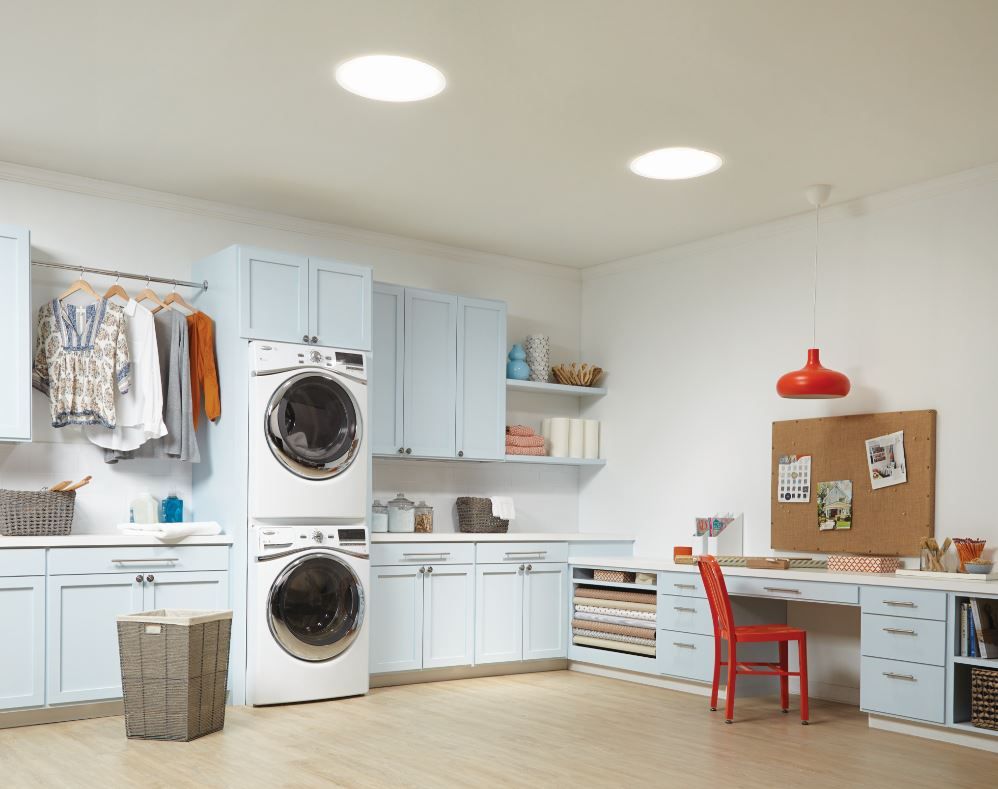
Sun tunnels are a versatile and cost-effective option to bring natural light into your home, particularly in spaces where traditional windows or skylights aren’t feasible. They’re energy-efficient, simple to install, and can boost mood and productivity. While they have some limitations compared to traditional skylights, their price and flexibility can outweigh these drawbacks.
As with any home improvement project, you should carefully consider your needs, budget, and home structure when deciding if sun tunnels are right for you. With proper selection and installation, sun tunnels can transform dark, dreary rooms into vibrant, light-filled areas that enhance your home’s overall comfort and appeal.